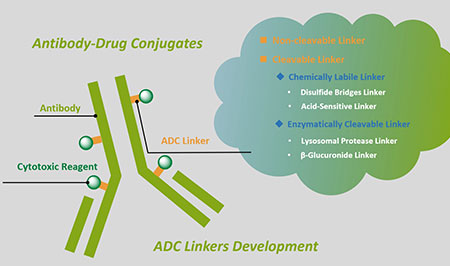1. The cure of leukemia through the optimist's prism
Hagop M Kantarjian, Nitin Jain, Guillermo Garcia-Manero, Mary Alma Welch, Farhad Ravandi, William G Wierda, Elias J Jabbour Cancer. 2022 Jan 15;128(2):240-259. doi: 10.1002/cncr.33933. Epub 2021 Oct 6.
Progress is occurring at a dizzying rate across all leukemias. Since the authors' review of the topic in Cancer in 2018, numerous discoveries have been made that have improved the therapy and outcomes of several leukemia subsets. Hairy cell leukemia is potentially curable with a single course of cladribine followed by rituximab (10-year survival, ≥90%). Acute promyelocytic leukemia is curable at a rate of 80% to 90% with a nonchemotherapy regimen of all-trans retinoic acid and arsenic trioxide. The cure rate for core-binding factor acute myeloid leukemia (AML) is ≥75% with fludarabine, high-dose cytarabine, and gemtuzumab ozogamicin. Survival for patients with chronic myeloid leukemia is close to that for an age-matched normal population with BCR-ABL1 tyrosine kinase inhibitors (TKIs). Chronic lymphocytic leukemia, a previously incurable disease, may now be potentially curable with a finite duration of therapy with Bruton tyrosine kinase inhibitors and venetoclax. The estimated 5-year survival rate for patients with Philadelphia chromosome-positive acute lymphoblastic leukemia (ALL) exceeds 70% with intensive chemotherapy and ponatinib, a third-generation BCR-ABL1 TKI, and more recent nonchemotherapy regimens using dasatinib or ponatinib with blinatumomab are producing outstanding results. Survival in both younger and older patients with ALL has improved with the addition of antibodies targeting CD20, CD19 (blinatumomab), and CD22 (inotuzumab) to chemotherapy. Several recent drug discoveries (venetoclax, FLT3 and IDH inhibitors, and oral hypomethylating agents) are also improving outcomes for younger and older patients with AML and for those with higher risk myelodysplastic syndrome.
2. ABBV-011, A Novel, Calicheamicin-Based Antibody-Drug Conjugate, Targets SEZ6 to Eradicate Small Cell Lung Cancer Tumors
Wolf R Wiedemeyer, Julia Gavrilyuk, Alexander Schammel, Xi Zhao, Hetal Sarvaiya, Marybeth Pysz, Christine Gu, Monica You, Kumiko Isse, Theodore Sullivan, Dorothy French, Christina Lee, Angeline T Dang, Zhaomei Zhang, Monette Aujay, Alexander J Bankovich, Philip Vitorino Mol Cancer Ther. 2022 Jun 1;21(6):986-998. doi: 10.1158/1535-7163.MCT-21-0851.
In the past year, four antibody-drug conjugates (ADC) were approved, nearly doubling the marketed ADCs in oncology. Among other attributes, successful ADCs optimize targeting antibody, conjugation chemistry, and payload mechanism of action. Here, we describe the development of ABBV-011, a novel SEZ6-targeted, calicheamicin-based ADC for the treatment of small cell lung cancer (SCLC). We engineered a calicheamicin conjugate that lacks the acid-labile hydrazine linker that leads to systemic release of a toxic catabolite. We then screened a patient-derived xenograft library to identify SCLC as a tumor type with enhanced sensitivity to calicheamicin ADCs. Using RNA sequencing (RNA-seq) data from primary and xenograft SCLC samples, we identified seizure-related homolog 6 (SEZ6) as a surface-expressed SCLC target with broad expression in SCLC and minimal normal tissue expression by both RNA-seq and IHC. We developed an antibody targeting SEZ6 that is rapidly internalized upon receptor binding and, when conjugated to the calicheamicin linker drug, drives potent tumor regression in vitro and in vivo. These preclinical data suggest that ABBV-011 may provide a novel treatment for patients with SCLC and a rationale for ongoing phase I studies (NCT03639194).
3. Targeted inhibitors and antibody immunotherapies: Novel therapies for paediatric leukaemia and lymphoma
Erica Brivio, André Baruchel, Auke Beishuizen, Jean-Pierre Bourquin, Patrick A Brown, Todd Cooper, Lia Gore, E Anders Kolb, Franco Locatelli, Shannon L Maude, Francis J Mussai, Britta Vormoor-Bürger, Josef Vormoor, Arend von Stackelberg, C Michel Zwaan Eur J Cancer. 2022 Mar;164:1-17. doi: 10.1016/j.ejca.2021.12.029. Epub 2022 Feb 1.
Despite improved outcomes achieved in the last decades for children with newly diagnosed leukaemia and lymphoma, treatment of patients with refractory/relapsed disease remains a challenge. The cure rate is still unsatisfactory and often achieved at the cost of significant morbidity. Exploring treatment with novel agents should offer less toxic therapeutic options, without compromising efficacy. Bispecific and antibody-drug conjugates targeting CD19 and CD22 (blinatumomab and inotuzumab ozogamicin) play an important role in the treatment of relapsed and refractory B-cell precursor acute lymphoblastic leukaemia (BCP-ALL); antibodies targeting CD123 and CD38 are also under investigation for acute myeloid leukaemia (AML) and T-ALL, respectively. Targeted therapy with small molecules is of primary importance for specific genetic subtypes, such as BCR-ABL-positive ALL, FLT3-ITD AML and anaplastic lymphoma kinase (ALK)-positive anaplastic large cell lymphoma. KMT2A-directed targeted therapy with menin inhibitors holds promise to be of relevance in KMT2A-rearranged leukaemias, known to have dismal prognosis. Target inhibition in cellular pathways such as BCL-2, RAS, MEK, Bruton's tyrosine kinase, JAK-STAT or CDK4/CDK6 inhibition may be suitable for different diseases with common mutated pathways. Nevertheless, development and approval of new agents for paediatric cancers lags behind adult therapeutic options. New regulations were implemented to accelerate drug development for children. Considering the number of oncology medicinal products available for adults and the rarity of paediatric cancers, prioritisation based on scientific evidence and medical need, as well as international collaboration, is critical. Herein, we review the current status of drug development for children with leukaemia and lymphoma, excluding cellular therapy despite its well-known significance.







